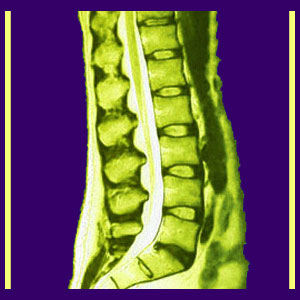
A diagnosis of sciatica is a medical error, pure and simple. Sciatica is a set of symptoms; never a complete diagnosis unto itself. Being diagnosed with sciatica is like going to the doctor and being diagnosed with a fever. It is merely a symptom. The very fact that this article has to be written, and furthermore, will come a shock to some doctors who have made the diagnosis for decades, is beyond my scope of comprehension. Instead, the diagnosis of sciatic nerve pain should be disregarded and replaced by a diagnosis of the root problem causing the low back, buttocks and leg pain.
This article will help clarify once and for all that fact that sciatica is not a separate entity. It is merely an effect of some causative structure, process or disease in the affected patient.
Sciatica Diagnostic Evaluation
There are many ways in which a diagnostic conclusion of sciatica may be reached by a doctor. The example below suggests a typical process which may be used by a physician or chiropractor:
A physical exam will be performed and typically a set of preliminary x-ray films will be taken if a spinal source is suspected. If further imaging studies are needed, an MRI or CT scan might be prescribed to determine if any herniated discs, degenerated discs or spinal stenosis are present and causative. If one of these conditions is discovered, the sciatic pain will most likely be attributed to this cause. Although research clearly shows that many mild to moderate spinal abnormalities are usually innocent and not problematic, this fact is often overlooked and blame is laid on the imaged spinal issue regardless. This flies in the face of diagnostic guidelines issued by the very medical associations governing physicians, yet is sometimes arbitrarily ignored to get the patient on to step two… The money maker: Treatment.
The way to treat the sciatica will be determined by the actual spinal condition causing the sciatic nerve pain. If no clear reason for sciatic pain is found, piriformis syndrome or sacroiliac pain might be diagnosed. These are actually possible causes of pseudosciatica, since actual sciatica involves a spinal source 100% of the time.
Regardless, it is almost never discussed that the majority of all lower back and leg pain conditions are idiopathic. Instead, a diagnosis will be made in almost every circumstance and in many, this verdict will be wrong. This is pure fact supported by both accepted medical research and poor treatment results, even when the therapy chosen seems to perfectly fit the diagnosed conclusion.
Diagnosis of Sciatica Warning
Many doctors who can’t find a definitive cause for sciatica pain prefer to treat with pain management drugs. Actually, let me revise that statement to read that many doctors treat exclusively with drugs, regardless of whether a diagnosis is achieved or not. These doctors will virtually never inform their patients of the risks or the simple fact that the drugs used will never cure them. Beware of such symptomatic treatment, since it will do nothing to resolve your pain. It might offer temporary relief, but maybe at the cost of an addiction, significant health issue or even death. The only thing worse than suffering with sciatica, is suffering with sciatica and being a drug addict, having organ or blood damage or dying due to pharmaceutical complications.
Please remember that sciatica is a symptom, not a condition. If your care provider diagnoses sciatica, make sure to ask them, “What is causing my sciatica?” If they can not provide a sensible and correct answer, then it may be time to get a new doctor.




